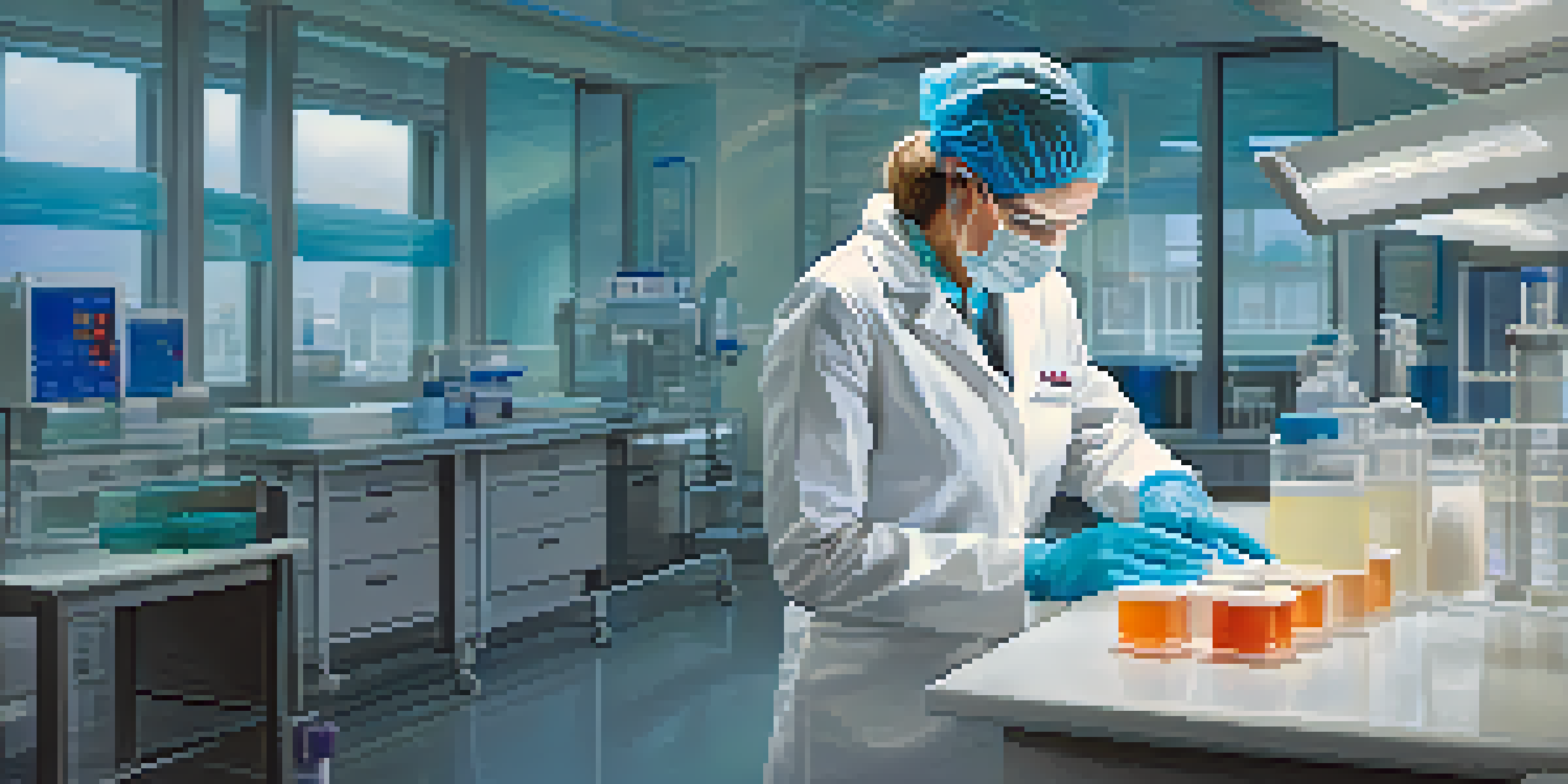Antimicrobial Resistance: A Growing Threat to Public Health

What Is Antimicrobial Resistance and Why Does It Matter?
Antimicrobial resistance (AMR) occurs when microorganisms like bacteria, viruses, and fungi evolve to resist the effects of medications. This means that common infections once easily treatable with antibiotics become harder to manage, posing a serious threat to public health. Understanding AMR is crucial as it can lead to longer hospital stays, higher medical costs, and increased mortality rates.
The emergence of antimicrobial resistance is a global crisis that threatens to reverse decades of medical progress.
Imagine trying to fight a fire with a hose that no longer sprays water. In many ways, this is what healthcare professionals face when dealing with resistant infections. The tools that once effectively tackled these infections are becoming less reliable, resulting in a growing cycle of illness and treatment failures.
The World Health Organization (WHO) has declared AMR one of the top ten global public health threats. As such, awareness and action are imperative to combat this looming crisis and protect the effectiveness of our current antibiotics.
The Causes of Antimicrobial Resistance
Several factors contribute to the rise of antimicrobial resistance, with overuse and misuse of antibiotics being the primary culprits. For instance, when patients demand antibiotics for viral infections, like the common cold, or when doctors prescribe them unnecessarily, it accelerates resistance. Additionally, incomplete courses of antibiotics can leave behind some bacteria that develop resistance, which can then proliferate.

Agricultural practices also play a significant role in AMR. The use of antibiotics in livestock to promote growth or prevent disease contributes to resistant strains that can be transmitted to humans through the food supply. This interconnectedness highlights how AMR doesn't just affect healthcare; it touches various facets of our lives.
Antimicrobial Resistance Threatens Health
AMR makes common infections harder to treat, resulting in longer hospital stays and increased healthcare costs.
Environmental factors, like the presence of antibiotics in wastewater and soil, further exacerbate the problem. As these resistant bacteria spread in the environment, they can mix with non-resistant strains, leading to more complex challenges in treatment.
The Impact of AMR on Global Health
The impact of antimicrobial resistance on global health is profound and multifaceted. Infections that were once easily treatable can now lead to severe health complications or death. This shift places immense pressure on healthcare systems, particularly in low- and middle-income countries, where resources are already stretched thin.
Antibiotics are a precious resource; we must use them wisely to ensure they remain effective for future generations.
Moreover, AMR affects surgical procedures and cancer treatments, as these interventions often rely on effective antibiotics to prevent infections. Without reliable antibiotics, even routine surgeries become risky, leading to increased healthcare costs and longer recovery times.
The economic burden of AMR is staggering, estimated to reach trillions of dollars annually if left unaddressed. This financial strain can hinder advancements in healthcare and limit access to essential services for vulnerable populations.
Recognizing the Symptoms of Resistant Infections
Identifying resistant infections early is crucial for effective treatment. Common symptoms may resemble those of typical infections: fever, chills, or fatigue. However, if these symptoms persist despite antibiotic treatment, it may indicate that the infection is resistant.
For example, a patient with pneumonia that does not improve after several days of antibiotic therapy should be evaluated for possible resistance. Healthcare providers can then adjust treatment strategies to address the more resilient bacteria effectively.
Resistance Linked to Antibiotic Misuse
Overuse and misuse of antibiotics in humans and agriculture significantly contribute to the rise of resistant strains.
Patients should be encouraged to communicate openly with their healthcare providers about their symptoms and any previous antibiotic use. This dialogue can lead to more accurate diagnoses and tailored treatment plans, ultimately improving outcomes.
Preventing Antimicrobial Resistance: What You Can Do
Preventing antimicrobial resistance starts with responsible antibiotic use. Patients should only take antibiotics when prescribed by a healthcare professional and complete the full course as directed, even if they start feeling better. This ensures that all the bacteria are eliminated and reduces the chances of developing resistance.
Good hygiene practices can also significantly reduce the spread of infections. Regular handwashing, safe food handling, and vaccinations are simple yet effective ways to protect yourself and others from infections that might require antibiotic treatment.
Additionally, advocating for policies that promote the responsible use of antibiotics in both healthcare and agriculture is vital. Supporting initiatives aimed at improving infection prevention and control can help combat the spread of resistant strains.
The Role of Healthcare Professionals in Combating AMR
Healthcare professionals play a pivotal role in the fight against antimicrobial resistance. By adhering to guidelines for prescribing antibiotics, they can help ensure these medications remain effective. Educating patients about the appropriate use of antibiotics and the dangers of misuse is also a critical responsibility.
In hospitals, implementing strict infection control measures, such as hand hygiene and sterilization protocols, can prevent the spread of resistant bacteria. Healthcare workers must stay informed about the latest research and guidelines to effectively manage and treat resistant infections.
Preventive Actions Can Combat AMR
Responsible antibiotic use, good hygiene practices, and advocacy for proper policies are essential in preventing AMR.
Collaboration among healthcare providers, researchers, and policymakers is essential to develop new strategies and treatments. By working together, the medical community can create a united front against the rising tide of antimicrobial resistance.
Future Perspectives: Research and Innovations in AMR
The fight against antimicrobial resistance is ongoing, with researchers actively seeking innovative solutions. New antibiotics are being developed, but the process is slow and often costly. As a result, alternative therapies, such as bacteriophage therapy and immunotherapies, are gaining attention as potential options to combat resistant infections.
Investments in research are critical for discovering novel treatments and understanding the mechanisms behind resistance. Encouraging collaboration between academia, industry, and government can accelerate progress and lead to breakthroughs that improve public health.

Public awareness campaigns are also essential in educating the community about AMR. By fostering a culture of understanding and responsibility surrounding antibiotic use, we can collectively work towards a future where effective treatments remain available.